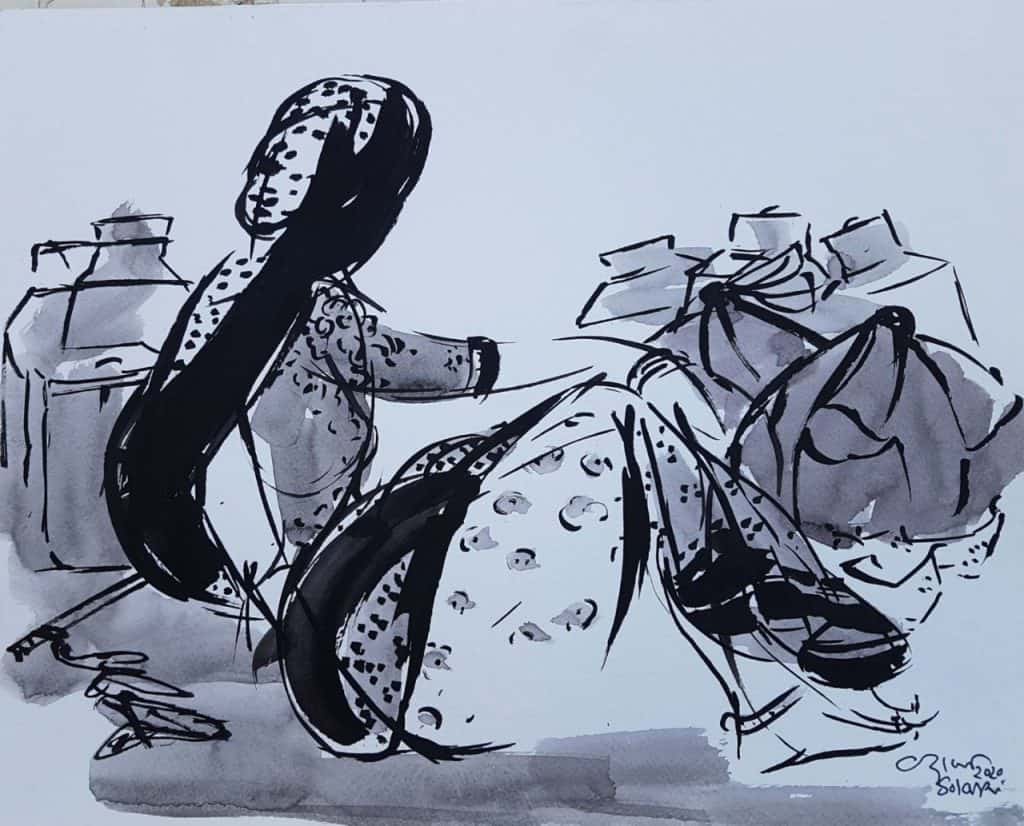
Art, rarely looked at as a necessary economic activity, too is facing uncertain, unsettling and challenging conditions in these pandemic times. Unfortunately, it comes at a time when art had been growing in Ahmedabad in recent years, as a business and investment. Now, as with all other activity, the lockdown has brought to a standstill the world and livelihood of both performing and visual artists. As Gujarat battles to contain the virus, with any kind of normalcy still a long time away, “everything arty will take longer to bounce back,” said Anurita Rathore Jadeja, a writer and art curator.

Many new artists and students who had just stepped out to begin their struggle for fame and fortune have had to consider more mundane activities to survive the lockdown. “One of my friends is producing sanitisers and another has dedicated himself to social work,” said Sailee Parikh, a music student who also used to take tuitions, but has not given up on her dream of opening a music school. “I have shelved the plans for at least two years”.

Ahmedabad is a city that values art and artists mainly on a commercial basis, not on its creativity. And it is as competitive as any other business. For those who view art as an investment, this is the time to buy the work of emerging artists “at highly depressed prices as the number of patrons will be much less,” said Manhar Kapadia, successful artist and assistant professor in CN Fine Arts college.
It is not just artists, but people in other creative areas too, such as orchestra musicians who earn their living from staging art and music shows, who are scared and insecure. “Vacation is the time when all clubs hold cultural programmes,” said Priyanka Basu, a multi-talented artiste and owner of Club Shivranjani, that organises public and private shows in India and abroad. “All the performers have lost those contracts. Usually in this season, the three main auditoriums in Ahmedabad work three shifts for most of the week.”
Priyanka also refers to singers for whom Navaratri season is when overseas and daily shows are in huge demand, planned at least six months in advance. “Everyone fears that till next March, artistes and shows will be affected as gatherings will not be allowed, and spending on entertainment will be low priority”.
Going digital
But the news is not all bad, as many artists feel that with economic activity at a standstill, creativity has bloomed. Especially with the digital platform offering them new opportunities. “We are celebrating ekantutsav (celebration of being alone),” said Saumil Munshi of the Shyamal-Saumil brothers duo, leaders in sugam sangeet in Gujarat. “We are now experimenting with new compositions, sounds and techniques, and building a reservoir of creativity, that will delight our audience once lockdown opens. We are learning new software, digital collaborations, starting our e-magazine and e-tuitions. We are creating our digital presence and designing our future.”
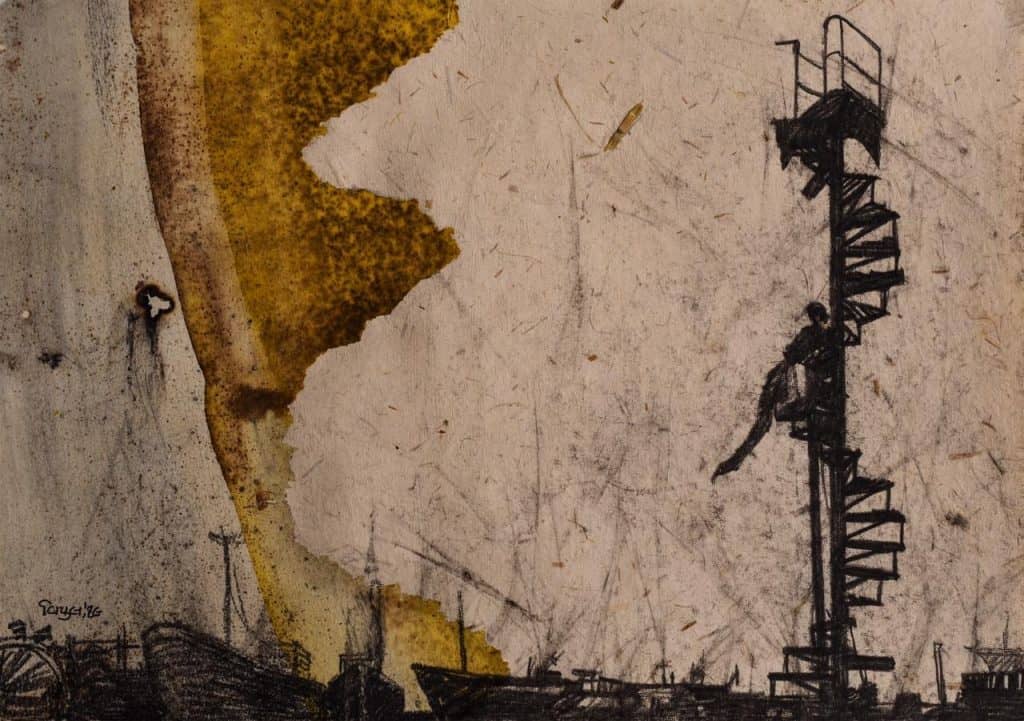
So are institutions like the well-known Saptak school of music which is planning weekly online concerts titled “Aantarnaad: Unlocking musicians and their Music”, to support out-of-work musicians. Those selected to perform will be paid by Saptak which is looking at crowd funding for this.
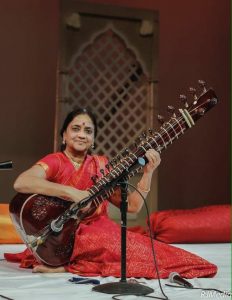
“Music, like any other art form, needs organisers and patrons who are missing right now,” said Saptak Trustee, reputed sitarist and music guru Manju Mehta. Saptak is featuring artistes on its YouTube channel and retro monthly Saptak archives will soon be online for those who are into classical music. “A major advantage of the digital platform is that talent can be showcased worldwide, and we are working on a model so it helps artistes flourish while using the current downtime to focus on riaz and experimentation.”
Visual arts is not behind in creative use of digital space. Purva Damani, Founder Director of 079 Stories Online has created an online platform for affordable art, where original Indian contemporary art, abstract art and photography art of 50 emerging artists is on sale. “Twelve senior artists like Paresh Maity, Jaysri Burman, Manu Parekh and Vrindavan Solanki are supporting us by sharing their original work at low price,” said Purva. “We have got new buyers from India and countries like Australia, Japan, Dubai, Hong Kong, Chicago and New York. Our platform sells originals in the range of Rs. 2,500-20,000, and every week we feature 10 new artists. We plan to do five such shows. I feel these are exciting times for new artists.” The gallery, while accepting payment now, will deliver the art works without frames after lockdown.
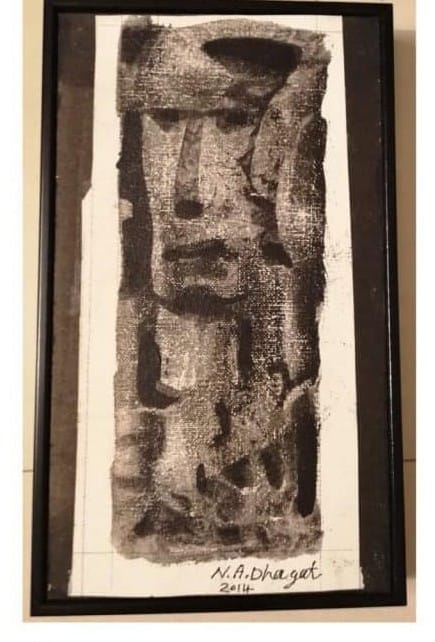
“It gives me faith that there are buyers and patrons, and post-lockdown, sales might be down but not completely missing,” said Vipul Prajapati, who has sold some of his art works online.
A major advantage of the digital platform is that talent can be showcased worldwide, and we are working on a model so it helps artistes flourish while using the current downtime to focus on riaz and experimentation.
Manju Mehta, Trustee, Saptak School of Music
Keeping hopes alive
Echoing this sentiment was Chaitya Dhanvi Shah, curator, DRS Arts Company, who has worked with 150 artists and done more than 50 shows. “We are planning to explore Artificial Intelligence and Art, and integrating utility products and art,” said Chaitya. “We expect a dip in demand for the next 6 to 12 months, with artists ready to sell their art at a huge discount. Yet, new artists will benefit as I foresee a correction of pricing and people will be willing to invest in potential.”
Chaitya feels that differentiators with innovation and uniqueness, while always valued, will be priced and valued that much more now. “We are moving to create awareness and sensitivity about art by promoting it online and have uploaded all our books online. We feel it is important to let people get a feel of art as an expression, and everything artistic.”
“You can’t lockdown creativity, it will find its way,” added a confident Nayana Soparkar, a microbiologist by education, sculptor by passion and owner of Mantra Art Gallery by profession. “Art is a combination of passion and hard work. Though sales is zero now, it can’t block the expression of creativity and art forms and expressions will change due to the social, mental and emotional turmoil, and we will get to see good work”.
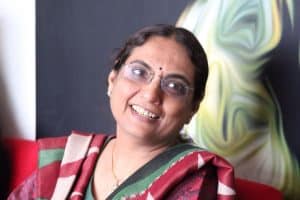
The emergence of creativity and maybe new art forms from the pandemic, lockdown and its aftermath, especially as artistes learn to use the digital platform better, is an idea expressed by many artistes Citizen Matters spoke to. “As an art proponent, it is my duty and responsibility to ensure that art and expression give soul strength to my students and society,” said Bharatnatyam Guru Chandan Thakore, director of Nrutya Bharti, that has had 23,000 arangetrams. “Art will help people deal with stress and humans will always seek solace in art, Geetam, vadyaam, tahat nrutam, trayam sangetam uchyata music, musical instrument and dance, the three give you delight of life).”
In the midst of the gloom that presently pervades Ahmedabad, these artistes certainly project a ray of optimism and hope.
Art will help people deal with stress and humans will always seek solace in art
Guru Chandan Thakore, Director, Nrutya Bharti, Ahmedabad